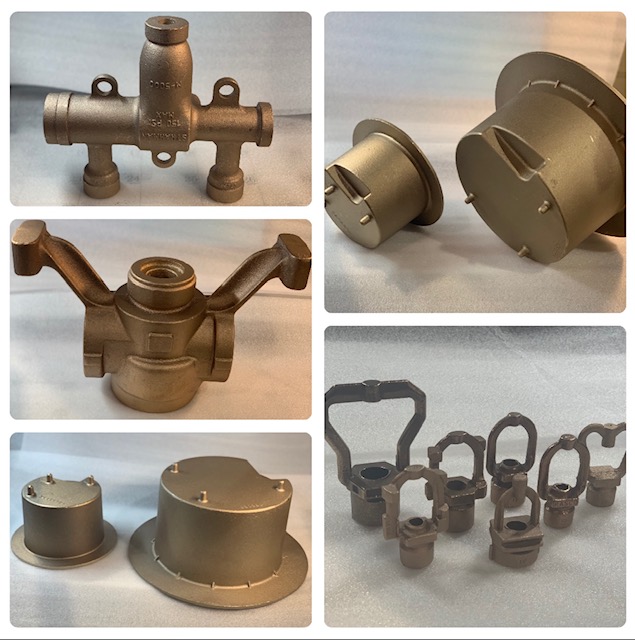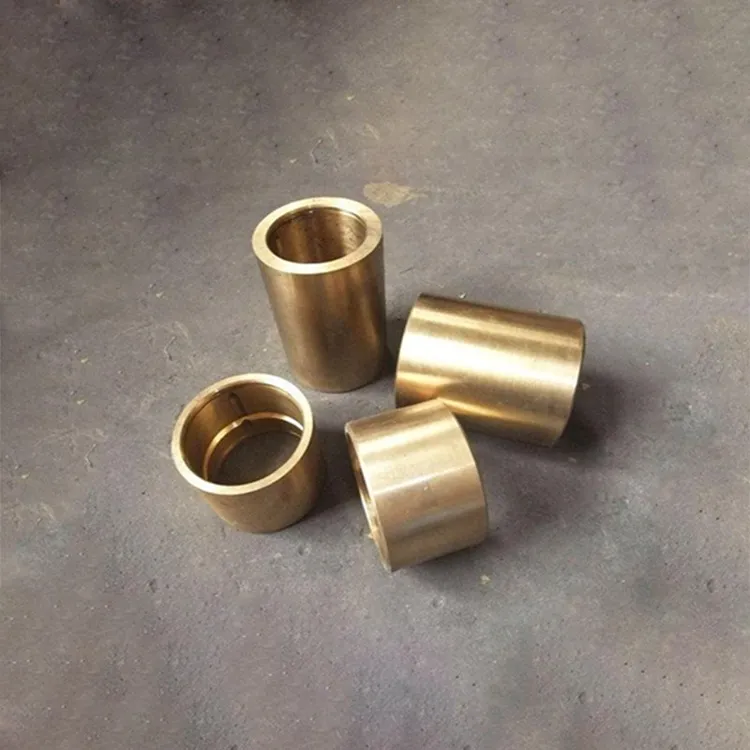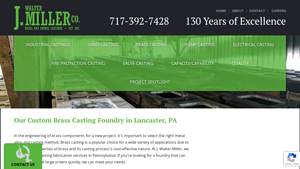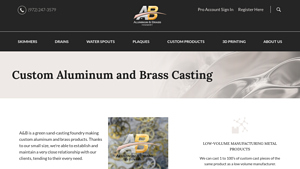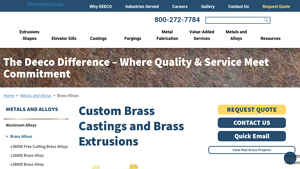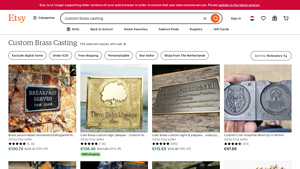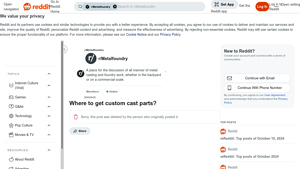Introduction: Navigating the Global Market for custom brass casting
In the ever-evolving landscape of international manufacturing, sourcing custom brass casting solutions presents unique challenges for B2B buyers across diverse markets such as Africa, South America, the Middle East, and Europe. From navigating fluctuating material costs to ensuring compliance with local standards, the intricacies involved in procuring high-quality brass components can be daunting. This guide aims to simplify the process by providing a comprehensive overview of custom brass casting, addressing key considerations such as types of alloys, casting methods, applications across various industries, and effective supplier vetting techniques.
Understanding the nuances of brass casting is crucial for informed decision-making. Buyers will explore the benefits of different brass alloys, including their corrosion resistance and electrical conductivity, which make them ideal for applications in sectors like construction, plumbing, and electrical components. Additionally, this guide will delve into cost factors, including the implications of automation in the casting process and the importance of quality control.
By equipping international buyers with actionable insights and best practices, this resource empowers you to make strategic purchasing decisions. Whether you’re based in Nigeria, Brazil, or elsewhere, our goal is to enhance your sourcing strategy for custom brass castings, ensuring you secure reliable products that meet your operational needs while optimizing your supply chain.
Understanding custom brass casting Types and Variations
| Type Name | Key Distinguishing Features | Primary B2B Applications | Brief Pros & Cons for Buyers |
|---|---|---|---|
| Green Sand Casting | Uses a sand mold that can be reused; cost-effective | Plumbing fittings, electrical components, valves | Pros: Cost-effective, good for large volumes. Cons: Limited detail in complex designs. |
| Investment Casting | High precision molds created from wax patterns | Aerospace, automotive, intricate components | Pros: Excellent dimensional accuracy. Cons: Higher costs and longer lead times. |
| Die Casting | Uses high-pressure molds for rapid production | Mass production of small parts, automotive parts | Pros: Fast production, excellent surface finish. Cons: Higher initial tooling costs. |
| Permanent Mold Casting | Metal molds used for repeated castings | High-volume manufacturing, mechanical components | Pros: Good dimensional stability, smooth surface. Cons: Limited to simpler shapes. |
| Lost Foam Casting | Molds made from foam patterns that are vaporized during casting | Complex shapes in automotive and art applications | Pros: Highly detailed shapes possible. Cons: More expensive due to foam material. |
What are the Characteristics of Green Sand Casting?
Green sand casting is one of the most traditional and widely used brass casting methods. It involves creating molds from a mixture of sand, clay, and water, allowing for a cost-effective production process. This method is particularly suitable for large volumes, making it ideal for applications in plumbing fittings, electrical components, and valves. Buyers should consider the trade-off between cost and the potential limitations in achieving intricate designs, as this method may not capture fine details as effectively as others.
How Does Investment Casting Stand Out?
Investment casting is distinguished by its high precision and ability to produce complex geometries. This method involves creating a wax pattern, which is coated in a ceramic shell. Once the shell hardens, the wax is melted away, leaving a detailed mold for brass casting. This technique is particularly beneficial for industries such as aerospace and automotive, where precision is paramount. While it offers excellent dimensional accuracy, buyers should be aware of the higher costs and longer lead times associated with this method.
What are the Benefits of Die Casting?
Die casting is a method that utilizes high-pressure molds to produce large quantities of brass parts quickly. It is especially effective for small, intricate components commonly found in automotive applications. The rapid production capabilities and superior surface finishes are significant advantages for B2B buyers seeking efficiency. However, the initial tooling costs can be higher, which may impact smaller businesses or one-time projects.
Why Choose Permanent Mold Casting?
Permanent mold casting employs reusable metal molds to create parts, offering good dimensional stability and surface quality. This method is particularly suited for high-volume manufacturing of mechanical components. Buyers benefit from the durability of the molds, leading to lower costs per unit in large runs. However, the design complexity is limited compared to other casting methods, which may be a consideration for projects requiring intricate shapes.
What is the Advantage of Lost Foam Casting?
Lost foam casting allows for the production of highly detailed shapes by using foam patterns that vaporize during the casting process. This method is ideal for applications in automotive and artistic fields, where complex designs are required. While it offers the ability to create intricate features, the costs associated with foam materials can be a disadvantage for budget-conscious buyers. Understanding these factors is crucial for making informed purchasing decisions in custom brass casting.
Key Industrial Applications of custom brass casting
| Industry/Sector | Specific Application of Custom Brass Casting | Value/Benefit for the Business | Key Sourcing Considerations for this Application |
|---|---|---|---|
| Fire Protection | Manufacturing of valves and fittings for fire suppression systems | Ensures reliability and safety in emergency situations | Compliance with safety standards, corrosion resistance, and lead-free options |
| Electrical Components | Production of connectors and switchgear | Enhances electrical conductivity and durability | Precision in machining, availability of specific brass alloys, and delivery timelines |
| Plumbing and HVAC | Creation of faucets, valves, and pipe fittings | Provides long-lasting, corrosion-resistant solutions | Certification for potable water applications, lead-free materials, and customization capabilities |
| Automotive and Marine | Fabrication of decorative and functional components | Combines aesthetic appeal with robust performance | Expertise in complex designs, weight considerations, and resistance to harsh environments |
| Architectural Elements | Development of custom handrails and ornamental pieces | Adds unique design features while ensuring structural integrity | Customization options, artistic capabilities, and adherence to architectural standards |
How is Custom Brass Casting Used in Fire Protection Systems?
In the fire protection industry, custom brass casting is crucial for producing valves and fittings that regulate water flow and pressure in suppression systems. These components must withstand high temperatures and harsh environments. Buyers need to consider compliance with safety standards and the necessity for corrosion-resistant materials, especially in regions prone to extreme weather conditions. The reliability of these parts is essential for ensuring safety during emergencies.
What Role Does Custom Brass Casting Play in Electrical Components?
Custom brass casting is widely used in the electrical sector for manufacturing connectors and switchgear that require excellent conductivity and durability. These components help in minimizing electrical losses and ensuring efficient operation. B2B buyers must prioritize sourcing from foundries that offer precision machining and a variety of brass alloys tailored to their specific needs. Timely delivery and quality assurance are also critical factors in maintaining operational efficiency.
How is Custom Brass Casting Beneficial for Plumbing and HVAC?
In plumbing and HVAC applications, custom brass castings are utilized to create faucets, valves, and pipe fittings that are resistant to corrosion and wear. The longevity and reliability of these components are vital for maintaining water quality and system efficiency. Buyers should seek suppliers that offer lead-free materials and have certifications for potable water applications, particularly in international markets where regulations may vary.
What Advantages Does Custom Brass Casting Provide in Automotive and Marine Industries?
The automotive and marine sectors leverage custom brass casting for both decorative and functional components, such as trim pieces and fasteners. Brass’s aesthetic appeal combined with its strength makes it ideal for these applications. Buyers should look for manufacturers that can handle complex designs and understand the unique environmental challenges these components face, such as exposure to saltwater in marine applications.
How is Custom Brass Casting Used in Architectural Elements?
Custom brass casting is essential for creating handrails and ornamental architectural pieces that enhance both functionality and aesthetics. These castings not only need to meet structural integrity standards but also should offer customization options to align with design specifications. Sourcing from suppliers experienced in architectural standards and artistic capabilities can significantly impact the success of a project, especially in diverse international markets.
3 Common User Pain Points for ‘custom brass casting’ & Their Solutions
Scenario 1: Navigating Alloy Selection for Specific Applications
The Problem: One of the most significant challenges B2B buyers face when procuring custom brass castings is selecting the appropriate alloy for their specific application. Brass alloys vary widely in terms of properties such as corrosion resistance, strength, and machinability. For example, buyers in the plumbing sector may need a lead-free alloy due to health regulations, while those in the electrical industry may prioritize alloys with superior conductivity. Misunderstanding these properties can lead to costly product failures or regulatory compliance issues.
The Solution: To effectively navigate alloy selection, buyers should begin by clearly defining the performance requirements of their application. This includes understanding environmental factors like exposure to moisture or chemicals, which can affect the alloy’s longevity. Collaborating closely with suppliers who have expertise in brass alloys can provide valuable insights. Requesting sample materials and testing them in real-world conditions can also help ensure the chosen alloy meets the necessary specifications. Additionally, buyers should stay informed about industry regulations that may affect alloy choices, especially in sectors like plumbing, where lead-free options are mandated.
Scenario 2: Overcoming Long Lead Times in Custom Orders
The Problem: Another common pain point for B2B buyers is encountering long lead times for custom brass casting orders. This issue can stem from a variety of factors, including the complexity of the design, the casting method selected, or even the foundry’s production capacity. Delays in obtaining critical components can halt project timelines, leading to increased costs and lost business opportunities. Buyers often feel frustrated when they are unable to meet their own deadlines due to factors outside their control.
The Solution: To mitigate lead time issues, buyers should engage in proactive communication with their casting suppliers. Discussing project timelines upfront and understanding the foundry’s production capabilities can help set realistic expectations. Buyers can also consider utilizing advanced planning techniques, such as placing orders well in advance of peak production times or exploring multiple suppliers to diversify their sourcing options. Additionally, simplifying designs where possible can reduce manufacturing complexity, leading to quicker turnaround times. Establishing a strong relationship with a reliable foundry that can accommodate rush orders or has flexible production schedules can also be a game-changer.
Scenario 3: Ensuring Quality Control and Consistency
The Problem: Quality control is a critical concern for buyers of custom brass castings, especially when sourcing from international suppliers. Variations in manufacturing processes, equipment, and material quality can lead to inconsistencies in the final product, which can jeopardize the integrity of the end application. Buyers may find themselves facing defective parts, leading to expensive rework or replacement, as well as damaging their reputation in the marketplace.
The Solution: To ensure high-quality outcomes, buyers should implement a robust quality assurance process when sourcing custom brass castings. This includes conducting thorough due diligence on potential suppliers, looking for certifications that demonstrate adherence to international quality standards, such as ISO 9001. Buyers should also request detailed reports on the foundry’s quality control practices, including testing methods for defects and dimensional accuracy. Establishing clear specifications and tolerances in the initial order documentation can further minimize discrepancies. Regular communication with the supplier throughout the production process can facilitate quick resolutions to any issues that arise, ensuring that the final products consistently meet expectations.
Strategic Material Selection Guide for custom brass casting
What Are the Key Properties of Common Brass Alloys Used in Custom Brass Casting?
When selecting materials for custom brass casting, understanding the properties and applications of different brass alloys is crucial for B2B buyers. Here, we analyze four common brass alloys: Leaded Semi-Red Brass (C84400), Leaded Red Brass (C83600), Dezincification-Resistant Brass (DZR), and Lead-Free Brass. Each alloy offers unique characteristics that can significantly impact product performance and suitability for various applications.
How Does Leaded Semi-Red Brass (C84400) Perform?
Leaded Semi-Red Brass (C84400) is known for its excellent machinability and good corrosion resistance. It typically operates well under moderate temperature and pressure conditions, making it suitable for applications like plumbing fittings and electrical components.
Pros: This alloy is easy to machine, which reduces manufacturing complexity and costs. It also provides good strength and durability, ensuring long-lasting performance in various environments.
Cons: However, the presence of lead raises concerns regarding health and environmental regulations, particularly in regions with stringent compliance standards.
Impact on Application: C84400 is compatible with water, air, and various gases, but its lead content limits its use in potable water applications in many jurisdictions.
What Advantages Does Leaded Red Brass (C83600) Offer?
Leaded Red Brass (C83600) is characterized by its high strength and excellent corrosion resistance, particularly in marine environments. It is often used in applications such as valves, fittings, and pump components.
Pros: Its durability and resistance to corrosion make it ideal for demanding environments. The alloy’s good thermal and electrical conductivity also enhances its performance in electrical applications.
Cons: Similar to C84400, the lead content poses regulatory challenges, especially in markets prioritizing lead-free solutions.
Impact on Application: C83600 is suitable for industrial applications where exposure to moisture and corrosive agents is common, but buyers must consider local regulations regarding lead use.
Why Choose Dezincification-Resistant Brass (DZR)?
Dezincification-Resistant Brass (DZR) is engineered to withstand corrosive environments, particularly in plumbing and water systems. It offers excellent resistance to dezincification, making it a reliable choice for potable water applications.
Pros: The primary advantage of DZR is its ability to maintain structural integrity in aggressive water environments, reducing the risk of failure.
Cons: The manufacturing process for DZR can be more complex and costly compared to standard brass alloys, which may impact pricing.
Impact on Application: DZR is ideal for applications involving potable water, ensuring compliance with health regulations. Buyers in regions with strict water quality standards, such as Europe, will find DZR particularly appealing.
What Are the Benefits of Using Lead-Free Brass?
Lead-Free Brass alloys are increasingly becoming the preferred choice due to regulatory pressures and health concerns associated with lead. These alloys provide good corrosion resistance and mechanical properties, suitable for a variety of applications.
Pros: The absence of lead makes these alloys compliant with health regulations, making them suitable for use in drinking water systems and other sensitive applications.
Cons: Lead-free alloys may have slightly lower machinability compared to their leaded counterparts, potentially increasing manufacturing costs.
Impact on Application: Lead-Free Brass is ideal for applications requiring compliance with international standards, particularly in markets like Europe and North America, where regulations are stringent.
Summary Table of Brass Alloys for Custom Brass Casting
| Material | Typical Use Case for custom brass casting | Key Advantage | Key Disadvantage/Limitation | Relative Cost (Low/Med/High) |
|---|---|---|---|---|
| Leaded Semi-Red Brass (C84400) | Plumbing fittings, electrical components | Excellent machinability and durability | Regulatory concerns due to lead content | Medium |
| Leaded Red Brass (C83600) | Valves, fittings, pump components | High strength and corrosion resistance | Lead content limits use in potable water | Medium |
| Dezincification-Resistant Brass (DZR) | Potable water applications | Superior resistance to dezincification | More complex and costly manufacturing process | High |
| Lead-Free Brass | Drinking water systems, sensitive applications | Compliance with health regulations | Lower machinability compared to leaded brass | Medium |
This strategic material selection guide provides valuable insights for international B2B buyers looking to optimize their custom brass casting projects. By understanding the properties, advantages, and limitations of each alloy, businesses can make informed decisions that align with their operational needs and regulatory requirements.
In-depth Look: Manufacturing Processes and Quality Assurance for custom brass casting
What Are the Key Stages in the Manufacturing Process of Custom Brass Casting?
The manufacturing process for custom brass casting involves several critical stages that ensure the production of high-quality components tailored to specific applications. Understanding these stages can help international B2B buyers evaluate potential suppliers effectively.
Material Preparation: What Materials Are Used and How Are They Processed?
The first stage in brass casting manufacturing is material preparation, which typically involves selecting the appropriate brass alloy based on the desired properties of the final product. Common alloys include C84400 Leaded Semi-Red Brass and C83600 Leaded Red Brass, each offering unique characteristics suited for different applications.
Once the alloy is selected, it is melted in specialized furnaces, reaching temperatures that allow for effective pouring into molds. The melting process must be carefully controlled to prevent oxidation and impurities, ensuring the integrity of the brass.
How Is the Forming Process Conducted in Brass Casting?
Forming is the next stage, primarily involving the creation of molds. Green sand casting is a prevalent technique, where a sand aggregate is used to form single-use molds. This method is favored for its reliability and ability to withstand high temperatures.
The mold-making process begins with the creation of a match plate, which serves as a prototype for the part being manufactured. Sand is then pressed around this plate to form the mold halves. Once the molds are prepared, molten brass is poured into them. The pouring must be done gradually to avoid trapping air bubbles, which can lead to defects in the final product.
What Finishing Techniques Are Employed After Casting?
After the brass has cooled and solidified, the next step is the removal and finishing of the castings. This involves breaking open the molds and extracting the finished components. Depending on the complexity of the part, additional finishing processes may include machining, surface polishing, and cleaning to remove any excess material.
Finishing is crucial as it enhances the aesthetic appeal of the brass and improves its functional properties, such as corrosion resistance and surface hygiene. Techniques like patination and plating can also be applied to achieve specific visual characteristics.
How Is Quality Assurance Implemented in Custom Brass Casting?
Quality assurance (QA) is a critical aspect of the brass casting process, especially for B2B buyers who require reliable and defect-free components. Various international and industry-specific standards guide the quality assurance practices in brass casting.
Which International Standards Are Relevant for Quality Control in Brass Casting?
ISO 9001 is one of the most recognized international standards for quality management systems. Compliance with ISO 9001 indicates that a foundry has established effective processes for managing quality throughout the manufacturing stages. Additionally, industry-specific certifications such as CE marking for safety and compliance, and API standards for oil and gas applications, are essential for ensuring that products meet specific regulatory requirements.
What Are the Key Quality Control Checkpoints in Brass Casting?
Quality control in brass casting typically involves several key checkpoints throughout the manufacturing process:
-
Incoming Quality Control (IQC): This step ensures that raw materials meet specified standards before they enter the production process. Suppliers should provide certificates of compliance for the materials used.
-
In-Process Quality Control (IPQC): This involves monitoring the casting process itself, including temperature control during melting and the integrity of molds during pouring. Regular checks can identify potential issues before they escalate.
-
Final Quality Control (FQC): After the casting is complete, finished products undergo rigorous testing to verify their dimensions, strength, and surface finish. Common testing methods include visual inspections, dimensional checks, and non-destructive testing techniques.
How Can B2B Buyers Verify Supplier Quality Control Practices?
For international B2B buyers, verifying a supplier’s quality control practices is essential to mitigate risks associated with product defects. Here are some effective strategies:
-
Supplier Audits: Conducting audits can provide insights into a supplier’s quality management system, production processes, and adherence to international standards. An on-site evaluation allows buyers to assess the capabilities and commitment to quality firsthand.
-
Requesting Quality Reports: Suppliers should be able to provide documentation detailing their quality control processes, testing results, and compliance with relevant standards. These reports offer transparency and assurance regarding the supplier’s commitment to quality.
-
Third-Party Inspections: Engaging third-party inspection services can add an additional layer of assurance. These organizations can conduct independent evaluations of both materials and finished products, providing unbiased assessments of quality.
What Nuances Should International Buyers Consider in Quality Control for Brass Castings?
B2B buyers from regions such as Africa, South America, the Middle East, and Europe should be mindful of specific nuances when evaluating quality control in brass casting suppliers. These may include:
-
Regional Standards and Regulations: Different regions may have varying standards regarding material safety and environmental regulations. Buyers should ensure that suppliers comply with local laws and international standards relevant to their target markets.
-
Cultural Differences in Quality Expectations: Understanding cultural attitudes toward quality can inform how buyers approach supplier relationships. Buyers should communicate their quality expectations clearly and ensure that suppliers are aligned with these standards.
-
Logistical Considerations: International buyers should also consider the logistics involved in transporting cast brass products. Quality can be compromised during transit, so ensuring that suppliers have robust packaging and shipping practices is essential.
In conclusion, the manufacturing processes and quality assurance practices associated with custom brass casting are vital for B2B buyers to understand. By focusing on the key stages of production and implementing thorough quality control measures, buyers can ensure they partner with reliable suppliers that meet their specific needs.
Practical Sourcing Guide: A Step-by-Step Checklist for ‘custom brass casting’
Introduction
This guide serves as a practical checklist for B2B buyers looking to procure custom brass casting services. Understanding the nuances of sourcing brass castings is crucial for ensuring quality, cost-effectiveness, and timely delivery. By following these steps, you can navigate the procurement process with confidence and make informed decisions that align with your project requirements.
Step 1: Define Your Technical Specifications
Establishing clear technical specifications is fundamental to your sourcing process. This includes detailing the desired dimensions, weight, alloy types, and any unique features your brass casting must possess. Specificity helps potential suppliers understand your needs and reduces the risk of receiving subpar products.
- Consider application requirements: Identify the industry standards that apply to your project, such as corrosion resistance or electrical conductivity.
- Include design files: If possible, provide 3D models or detailed drawings to facilitate accurate quotes and faster production timelines.
Step 2: Research Potential Suppliers
Conduct thorough research to identify potential suppliers with expertise in custom brass casting. Look for companies with a proven track record, especially those that serve your specific industry or region.
- Utilize online platforms: Explore trade directories, industry forums, and social media to gather information about suppliers and their reputation.
- Check reviews and ratings: Seek feedback from previous clients to gauge reliability, quality, and customer service.
Step 3: Evaluate Supplier Capabilities
Assess the capabilities of shortlisted suppliers to ensure they can meet your production needs. This evaluation should cover their manufacturing processes, equipment, and experience with similar projects.
- Inquire about casting methods: Understand the various casting techniques they employ, such as green sand casting or investment casting, and their suitability for your application.
- Request sample products: If feasible, ask for prototypes or samples to evaluate quality and craftsmanship firsthand.
Step 4: Verify Quality Control Standards
Quality assurance is critical in brass casting, as it directly impacts the performance of the final product. Verify that potential suppliers have robust quality control measures in place.
- Ask about certifications: Look for compliance with international standards such as ISO 9001 or industry-specific certifications.
- Understand testing procedures: Inquire about their testing methods for materials, dimensions, and mechanical properties to ensure they meet your specifications.
Step 5: Discuss Lead Times and Production Capacity
Understanding the supplier’s lead times and production capacity is essential for project planning. Ensure that they can deliver within your required timeframe without compromising quality.
- Assess their workflow: Discuss their production processes and any automation used to enhance efficiency.
- Evaluate scalability: Confirm that the supplier can handle both small and large orders as your needs may change over time.
Step 6: Negotiate Terms and Pricing
Once you’ve narrowed down your options, engage in discussions about pricing and payment terms. This step is crucial for establishing a mutually beneficial partnership.
- Request detailed quotes: Ensure that quotes include all costs associated with production, shipping, and potential customs duties.
- Clarify payment terms: Discuss deposit requirements, payment methods, and any warranties or guarantees offered.
Step 7: Establish Communication Protocols
Effective communication is vital throughout the sourcing process. Set clear expectations for communication channels and response times to avoid misunderstandings.
- Assign points of contact: Designate a representative from both your team and the supplier’s team to streamline communication.
- Schedule regular updates: Agree on a schedule for progress updates and check-ins to monitor production status and address any issues promptly.
By following this checklist, B2B buyers can enhance their sourcing strategy for custom brass casting, ensuring a successful partnership that meets their technical and business needs.
Comprehensive Cost and Pricing Analysis for custom brass casting Sourcing
What Are the Key Cost Components in Custom Brass Casting?
When analyzing the costs associated with custom brass casting, several key components must be considered:
-
Materials: The choice of brass alloy significantly impacts costs. Common alloys include C84400 Leaded Semi-Red Brass and C83600 Leaded Red Brass, each varying in price based on availability and quality. The cost of raw materials can fluctuate based on market demand and geopolitical factors, which may affect international buyers.
-
Labor: Skilled labor is essential in the casting process. Labor costs can vary by region; for example, labor may be less expensive in developing countries compared to Europe or North America. This difference can influence overall pricing, especially for large-scale orders.
-
Manufacturing Overhead: This includes the costs associated with factory operations, such as utilities, equipment maintenance, and indirect labor. Efficient operations can help reduce overhead, thereby lowering the final product cost.
-
Tooling: Custom tooling and molds are necessary for producing specific designs. The initial setup cost can be high, but it is typically amortized over larger production runs. Buyers should consider tooling costs when evaluating quotes, as they can significantly affect unit pricing.
-
Quality Control (QC): Ensuring product quality through rigorous QC processes adds to the cost structure. This step is crucial for industries like plumbing and electrical, where the reliability of components is paramount. Certification requirements can also add to costs.
-
Logistics: Shipping costs can vary widely based on the distance from the foundry to the buyer, mode of transport, and the Incoterms agreed upon. International buyers should be aware of additional duties or tariffs that may apply, impacting the total cost.
-
Margin: Suppliers typically include a profit margin in their pricing. This margin can vary based on competition, the supplier’s market position, and the complexity of the casting.
How Do Price Influencers Affect Custom Brass Casting Costs?
Several factors can influence the pricing of custom brass castings:
-
Volume/MOQ: Larger orders often qualify for volume discounts, lowering the per-unit cost. Minimum Order Quantities (MOQs) set by suppliers can affect pricing strategies for smaller buyers.
-
Specifications/Customization: Highly customized or intricate designs typically incur higher costs due to the additional labor and tooling required. Standardized parts are generally more cost-effective.
-
Materials: The choice of materials impacts pricing not only through the initial cost but also through the characteristics required for specific applications (e.g., corrosion resistance).
-
Quality/Certifications: Products that require specific certifications (e.g., for food safety or electrical components) can be more expensive due to the additional testing and compliance costs.
-
Supplier Factors: The reputation and reliability of the supplier can also influence pricing. Established suppliers may charge a premium for their proven quality and service.
-
Incoterms: The agreed terms of shipment can significantly affect pricing. Terms like CIF (Cost, Insurance, and Freight) versus FOB (Free on Board) can result in different cost structures for the buyer.
What Tips Should Buyers Consider for Cost-Efficiency in Custom Brass Casting?
-
Negotiation: Engaging in discussions with suppliers can yield better pricing. Understanding the cost structure enables buyers to negotiate effectively, especially for larger orders.
-
Total Cost of Ownership (TCO): Consider not just the purchase price but also the long-term costs associated with the product, including installation, maintenance, and potential failure rates. A higher upfront cost may result in lower TCO if the product is more durable or efficient.
-
Pricing Nuances for International Buyers: Buyers from Africa, South America, and the Middle East should be aware of currency fluctuations, import duties, and shipping costs that can affect overall pricing. Establishing strong relationships with suppliers can help mitigate some of these risks.
-
Request Detailed Quotes: Ensure that quotes from suppliers include a breakdown of costs. This transparency allows for better comparisons and understanding of where savings can be achieved.
-
Evaluate Supplier Capabilities: Assess suppliers not only based on price but also on their ability to meet quality and delivery expectations. Sometimes, paying slightly more for a reliable supplier can yield better value in the long run.
In summary, understanding the comprehensive cost structure and pricing influences in custom brass casting is essential for international B2B buyers. By considering these factors and employing strategic negotiation techniques, buyers can make informed decisions that enhance their procurement efficiency.
Alternatives Analysis: Comparing custom brass casting With Other Solutions
Exploring Alternative Solutions to Custom Brass Casting
In the realm of metal fabrication, custom brass casting is a popular choice due to its unique properties and versatility. However, several alternative methods also exist that can fulfill similar requirements. Understanding these alternatives can aid international B2B buyers in selecting the most suitable solution for their specific applications.
| Comparison Aspect | Custom Brass Casting | Investment Casting | CNC Machining |
|---|---|---|---|
| Performance | Excellent corrosion resistance, good electrical conductivity, and high strength. | High dimensional accuracy and surface finish; suitable for complex geometries. | Exceptional precision and repeatability; adaptable to various materials. |
| Cost | Generally cost-effective for medium to large runs; initial setup can be high. | Higher initial costs due to mold creation but lower per-unit costs for large volumes. | Higher costs for complex parts; machining time increases costs. |
| Ease of Implementation | Moderate; requires skilled labor for mold creation and pouring. | More complex; requires design and manufacturing of molds, which can be time-consuming. | Straightforward for simple designs, but complex geometries require more time and expertise. |
| Maintenance | Low; brass is durable and requires minimal upkeep. | Low; finished products are generally robust but may require finishing. | Moderate; tools and equipment require regular maintenance. |
| Best Use Case | Ideal for plumbing fixtures, electrical components, and decorative items. | Best for intricate parts with high precision needs, such as aerospace components. | Suitable for high-precision parts in automotive, electronics, and aerospace industries. |
What Are the Advantages and Disadvantages of Investment Casting?
Investment casting, also known as lost-wax casting, offers significant advantages in terms of precision and surface finish. It is particularly well-suited for complex geometries that would be difficult or impossible to achieve with traditional casting methods. However, the initial costs for mold creation can be high, making it less economical for small batch production. This method shines in industries where detail and accuracy are paramount, such as aerospace and medical devices.
How Does CNC Machining Compare to Custom Brass Casting?
CNC machining is another viable alternative, particularly noted for its precision and adaptability across various materials. This method allows for intricate designs and can produce parts with tight tolerances, making it ideal for applications in the automotive and electronics sectors. However, CNC machining can be cost-prohibitive for larger production runs due to the time-intensive nature of the process. While it excels at producing complex parts, the setup and machining time can lead to higher overall costs compared to custom brass casting.
Making the Right Choice: What Should B2B Buyers Consider?
When evaluating options between custom brass casting and its alternatives, B2B buyers should consider several factors. Key considerations include the specific performance requirements of their application, the volume of production needed, cost constraints, and the complexity of the parts to be produced. Custom brass casting is generally an excellent choice for durability and cost-effectiveness in medium to large runs, while investment casting may be preferable for intricate designs. On the other hand, CNC machining stands out in applications requiring high precision but comes at a higher price point for larger quantities. Ultimately, the decision should align with the buyer’s project needs and budget, ensuring they select the most suitable manufacturing method for their unique requirements.
Essential Technical Properties and Trade Terminology for custom brass casting
What Are the Key Technical Properties of Custom Brass Casting?
Understanding the essential properties of brass casting is crucial for B2B buyers looking to procure high-quality components. Here are the primary specifications to consider:
1. Material Grade
Material grade refers to the specific type of brass alloy used in the casting process. Common grades include C83600 (Leaded Red Brass) and C84400 (Leaded Semi-Red Brass). Each grade offers distinct properties such as corrosion resistance, strength, and machinability. Selecting the appropriate material grade directly impacts the performance and longevity of the final product, making it a critical factor in decision-making.
2. Tolerance Levels
Tolerance levels indicate the allowable deviation from specified dimensions in the final casting. Precision in tolerances is vital for ensuring that parts fit together correctly, especially in applications like plumbing or electrical components. Tight tolerances can lead to reduced assembly time and lower costs in subsequent machining processes, enhancing overall efficiency.
3. Casting Method
The casting method—such as green sand casting or investment casting—affects both the quality and cost of the finished product. Green sand casting is widely used for its cost-effectiveness and ability to produce complex shapes. Understanding the advantages and limitations of each method helps buyers choose the right foundry based on their project requirements.
4. Surface Finish
The surface finish of a brass casting can vary from rough to polished, depending on the application. A smooth finish may be required for aesthetic components, while a rough finish might suffice for industrial applications. Buyers should specify their surface finish requirements to ensure the final product meets both functional and aesthetic standards.
5. Mechanical Properties
Mechanical properties such as tensile strength, hardness, and ductility define how well a brass casting can withstand mechanical stress. For instance, higher tensile strength is crucial in load-bearing applications. Understanding these properties helps buyers assess whether a specific brass alloy will perform adequately in their intended application.
6. Corrosion Resistance
Brass is known for its natural resistance to corrosion, making it suitable for various environments, including marine and industrial settings. Buyers must evaluate the corrosion resistance of different brass alloys, especially when the components will be exposed to harsh conditions, to ensure durability and reduce maintenance costs.
What Are Common Trade Terms in Custom Brass Casting?
Familiarity with industry jargon is essential for effective communication and negotiation in brass casting procurement. Here are some key terms:
1. OEM (Original Equipment Manufacturer)
An OEM refers to a company that produces parts or equipment that may be marketed by another company. Understanding OEM relationships is vital for buyers who need specific components that fit within a larger assembly or product.
2. MOQ (Minimum Order Quantity)
MOQ is the smallest quantity of a product that a supplier is willing to sell. This term is crucial for B2B buyers, as it affects inventory management and cost efficiency. Knowing the MOQ helps buyers plan their purchases effectively.
3. RFQ (Request for Quotation)
An RFQ is a document that solicits price proposals from suppliers for specific products or services. This term is particularly important in the brass casting industry, where specifications can vary greatly, and obtaining accurate quotes is essential for budgeting and decision-making.
4. Incoterms
Incoterms (International Commercial Terms) define the responsibilities of buyers and sellers in international transactions. Familiarity with these terms helps buyers understand shipping costs, risks, and responsibilities, ensuring smoother transactions across borders.
5. Lead Time
Lead time refers to the time taken from placing an order until it is delivered. Understanding lead times is critical for project planning, especially when tight deadlines are involved. Buyers should always inquire about lead times to avoid disruptions in their supply chain.
6. Casting Yield
Casting yield measures the percentage of usable material derived from the casting process. A higher yield indicates more efficient use of materials, which can lead to cost savings. Buyers should consider yield rates when evaluating foundries to maximize their investment.
By grasping these technical properties and trade terms, B2B buyers can make informed decisions, ensuring they select the right brass casting solutions for their specific needs.
Navigating Market Dynamics and Sourcing Trends in the custom brass casting Sector
What Are the Key Market Trends Influencing Custom Brass Casting?
The custom brass casting sector is experiencing a dynamic shift driven by global economic factors and technological advancements. One significant driver is the increasing demand for high-quality brass components across various industries such as construction, plumbing, and electrical applications. This demand is particularly pronounced in emerging markets in Africa and South America, where infrastructure development is on the rise. Moreover, the Middle East’s focus on diversifying its economy away from oil dependency has led to investments in manufacturing, further boosting the brass casting industry.
Emerging technologies are revolutionizing sourcing trends in this sector. Automation and advanced casting techniques, such as 3D printing and precision casting, are enhancing production efficiencies and reducing lead times. International B2B buyers are increasingly seeking suppliers that can deliver custom solutions with rapid turnaround times, thereby gaining a competitive edge. Additionally, the integration of digital platforms for procurement is streamlining the sourcing process, allowing buyers from diverse regions, including Europe, Nigeria, and Brazil, to access a broader range of suppliers and products.
How Is Sustainability and Ethical Sourcing Shaping the Custom Brass Casting Industry?
Sustainability has become a critical consideration in the custom brass casting sector. The environmental impact of metal casting processes, particularly regarding energy consumption and waste generation, has prompted many manufacturers to adopt greener practices. This includes utilizing recycled materials and implementing energy-efficient technologies to minimize their carbon footprint.
Ethical sourcing is also gaining traction among B2B buyers who prioritize transparency and sustainability in their supply chains. Buyers are increasingly looking for suppliers who can demonstrate compliance with environmental regulations and possess certifications for sustainable practices. The use of green materials, such as lead-free brass alloys, is becoming essential, especially in regions with stringent regulations regarding hazardous substances. By choosing suppliers committed to sustainable practices, international buyers can enhance their brand reputation and meet the growing consumer demand for environmentally responsible products.
How Has the Custom Brass Casting Industry Evolved Over Time?
The custom brass casting industry has a rich history that dates back to ancient civilizations, where brass was first used for its aesthetic appeal and corrosion resistance. Over the centuries, advancements in metallurgy and casting techniques have transformed the industry. The introduction of modern casting methods, such as green sand casting and investment casting, has allowed manufacturers to produce intricate designs with higher precision and efficiency.
The evolution of the industry has also been influenced by changing market demands. As industries have grown more specialized, the need for customized brass components has surged, leading to the rise of specialized foundries capable of meeting diverse client specifications. Today, the focus on innovation and sustainability continues to drive the industry forward, positioning custom brass casting as a vital component in modern manufacturing across various sectors.
Frequently Asked Questions (FAQs) for B2B Buyers of custom brass casting
-
How do I choose the right brass alloy for my project?
Selecting the appropriate brass alloy depends on the specific requirements of your application. Consider factors such as corrosion resistance, strength, machinability, and aesthetic properties. Common alloys like C84400 and C83600 are popular for their durability and workability. Engaging with your supplier early in the design process can help ensure you choose an alloy that meets both performance and regulatory standards, especially for applications in plumbing or electrical components. -
What are the typical minimum order quantities (MOQs) for custom brass castings?
MOQs for custom brass castings can vary significantly based on the foundry and the complexity of the order. Generally, for standard products, MOQs might start at 100 pieces, while highly customized items may have higher MOQs due to setup costs. It’s essential to communicate your needs with potential suppliers upfront, as some foundries may be willing to accommodate lower quantities for specific projects, particularly when establishing long-term partnerships. -
What quality assurance measures should I expect from a brass casting supplier?
Reputable brass casting suppliers should implement stringent quality assurance protocols throughout the manufacturing process. Expect to see certifications for ISO standards, regular inspections of raw materials, and thorough testing of finished products. Key quality metrics include dimensional accuracy, surface finish, and material composition. Ask for documentation of quality control processes and any third-party testing reports to ensure the supplier meets your industry standards. -
What customization options are available for brass castings?
Most brass casting foundries offer a range of customization options, including specific alloy compositions, sizes, and finishes. You can also request unique designs and features tailored to your product requirements. Providing detailed technical drawings will help suppliers understand your vision and capabilities. Additionally, inquire about their flexibility to adjust production runs or modify existing designs, as this can significantly impact your project timelines. -
What payment terms are standard for international B2B transactions in brass casting?
Payment terms can vary widely between suppliers, but common practices include deposits (typically 30-50%) before production and the balance upon completion or before shipment. Some suppliers may offer letters of credit or payment through escrow services for added security in international transactions. It’s advisable to clarify payment terms and any applicable taxes, tariffs, or shipping costs upfront to avoid surprises later in the process. -
How do I vet potential brass casting suppliers effectively?
To vet suppliers, start by reviewing their credentials, certifications, and industry experience. Request references from previous clients, especially those in your industry, to gauge their reliability and product quality. Visiting the foundry, if feasible, can provide insights into their operations and quality control measures. Additionally, consider their responsiveness and willingness to communicate throughout the vetting process, as this can indicate their commitment to customer service. -
What logistics considerations should I keep in mind when sourcing brass castings internationally?
When sourcing brass castings from international suppliers, consider shipping times, customs clearance, and potential import duties. Work with suppliers who have experience in international logistics to ensure timely delivery. It’s also wise to discuss packaging methods to prevent damage during transit. Establishing a clear timeline and communication plan can mitigate delays and help manage expectations regarding delivery schedules. -
What industries commonly utilize custom brass castings?
Custom brass castings are prevalent in various industries, including plumbing, electrical components, automotive, and construction. They are valued for their corrosion resistance, strength, and aesthetic appeal, making them suitable for applications like valves, connectors, and decorative hardware. Understanding the specific industry requirements can help you identify the best suppliers with relevant experience and expertise in producing components tailored to your needs.
Important Disclaimer & Terms of Use
⚠️ Important Disclaimer
The information provided in this guide, including content regarding manufacturers, technical specifications, and market analysis, is for informational and educational purposes only. It does not constitute professional procurement advice, financial advice, or legal advice.
While we have made every effort to ensure the accuracy and timeliness of the information, we are not responsible for any errors, omissions, or outdated information. Market conditions, company details, and technical standards are subject to change.
B2B buyers must conduct their own independent and thorough due diligence before making any purchasing decisions. This includes contacting suppliers directly, verifying certifications, requesting samples, and seeking professional consultation. The risk of relying on any information in this guide is borne solely by the reader.
Top 6 Custom Brass Casting Manufacturers & Suppliers List
1. J Walter Miller – Custom Brass Casting Services
Domain: jwaltermiller.com
Registered: 2000 (25 years)
Introduction: Custom brass casting services in Pennsylvania, specializing in small and large orders. Brass casting is cost-effective and utilizes green sand casting method. Applications include connectors, switch gears, pump parts, valves, sprinkler heads, and more. Industries served: fire protection, electrical components, flow control, construction, plumbing, hardware, and pneumatics. Brass casting process in…
2. AB Foundry LLC – Custom Aluminum and Brass Castings
Domain: abfoundryllc.com
Registered: 2018 (7 years)
Introduction: Custom Aluminum and Brass Castings, Green sand-casting foundry, Custom products include: Designer items, Drains, Metal skimmer lids, Concrete stamps, Fittings, Hand tools, Metal shapes, Fabricated Metal Parts, Custom Brass Products, Architectural Metal Work, Signage/Plaques, Drainage Products, Landscape & Pool Products, Special orders for unique configurations, Replicas of lost or broken ornamenta…
3. Serett – Custom Metal Fabrication & Architectural Components
Domain: serett.com
Registered: 2007 (18 years)
Introduction: Bronze Cast Architectural Components & Sculptures, Custom Metal Fabrication, Commercial and Residential staircases, Helix Sculptural Single & Double Stringers, Custom Stair Ideas, Furniture, Ipad Holder, Production Run, Portable Towel Bar, Stainless Steel Table, Metal Painted Bookcase, Custom Copper & Steel Bases, Interior Glass & Patina Steel Office Divider, Glass & Steel Bakers Rack, Custom Ligh…
4. DeeCo Metals – Custom Brass Castings & Forgings
Domain: deecometals.com
Registered: 2001 (24 years)
Introduction: Custom Brass Castings & Extrusions, Cast Brass Parts, Architectural Metal Extrusions, Elevator Sills, Sand Castings, Die Castings, Investment Castings, Architectural Metal Castings, Forgings, Aluminum Forgings, Brass Forgings, Copper Forgings, Closed Die Forging, Magnesium Forgings, Stainless Steel Forgings, Steel Forgings, Metal Fabrication, MIM and Sintered Parts, Machined Parts, Metal Stamping,…
5. Etsy – Custom Brass Casting Products
Domain: etsy.com
Registered: 2004 (21 years)
Introduction: Custom Brass Casting products available on Etsy include a variety of items such as custom signs and plaques, personalized sculptures, and metal charms. Prices range from $5.99 to $770.00, with many items offering free shipping. Key offerings include unlacquered wall plaques, bronze and brass casting services, custom logo plaques, and personalized dedication plaques. Discounts are available on seve…
6. Reddit – Custom Cast Parts
Domain: reddit.com
Registered: 2005 (20 years)
Introduction: Custom cast parts can be sourced from various providers, including 3D printing services that specialize in brass. Some users recommend contacting casting brokers for one-off projects, while others suggest using lost wax casting for complex shapes. Specific companies mentioned include Model Pattern & Foundry Co in Cincinnati, Ohio, and Windy Hill Foundry, which requires an adequate pattern for cast…
Strategic Sourcing Conclusion and Outlook for custom brass casting
In the evolving landscape of custom brass casting, strategic sourcing remains pivotal for international buyers seeking quality, cost-efficiency, and reliability. As highlighted throughout this guide, brass casting offers unique advantages, including excellent corrosion resistance, durability, and versatility across various applications—from plumbing to electrical components. Understanding the specific properties of different brass alloys and the casting processes, such as green sand casting, empowers buyers to make informed decisions that align with their project requirements.
By establishing strong partnerships with reputable foundries, businesses can leverage advanced manufacturing capabilities and reduce lead times, ensuring timely delivery of high-quality brass components. The importance of selecting suppliers who can accommodate both small and large orders cannot be overstated, particularly for those operating in diverse markets across Africa, South America, the Middle East, and Europe.
Looking ahead, the demand for custom brass castings is poised to grow as industries increasingly prioritize sustainability and innovative design. Now is the time for B2B buyers to engage with experienced suppliers, explore unique casting solutions, and capitalize on the benefits of brass in their applications. Connect with your strategic sourcing partners today to drive your projects forward and unlock new opportunities in the global marketplace.
